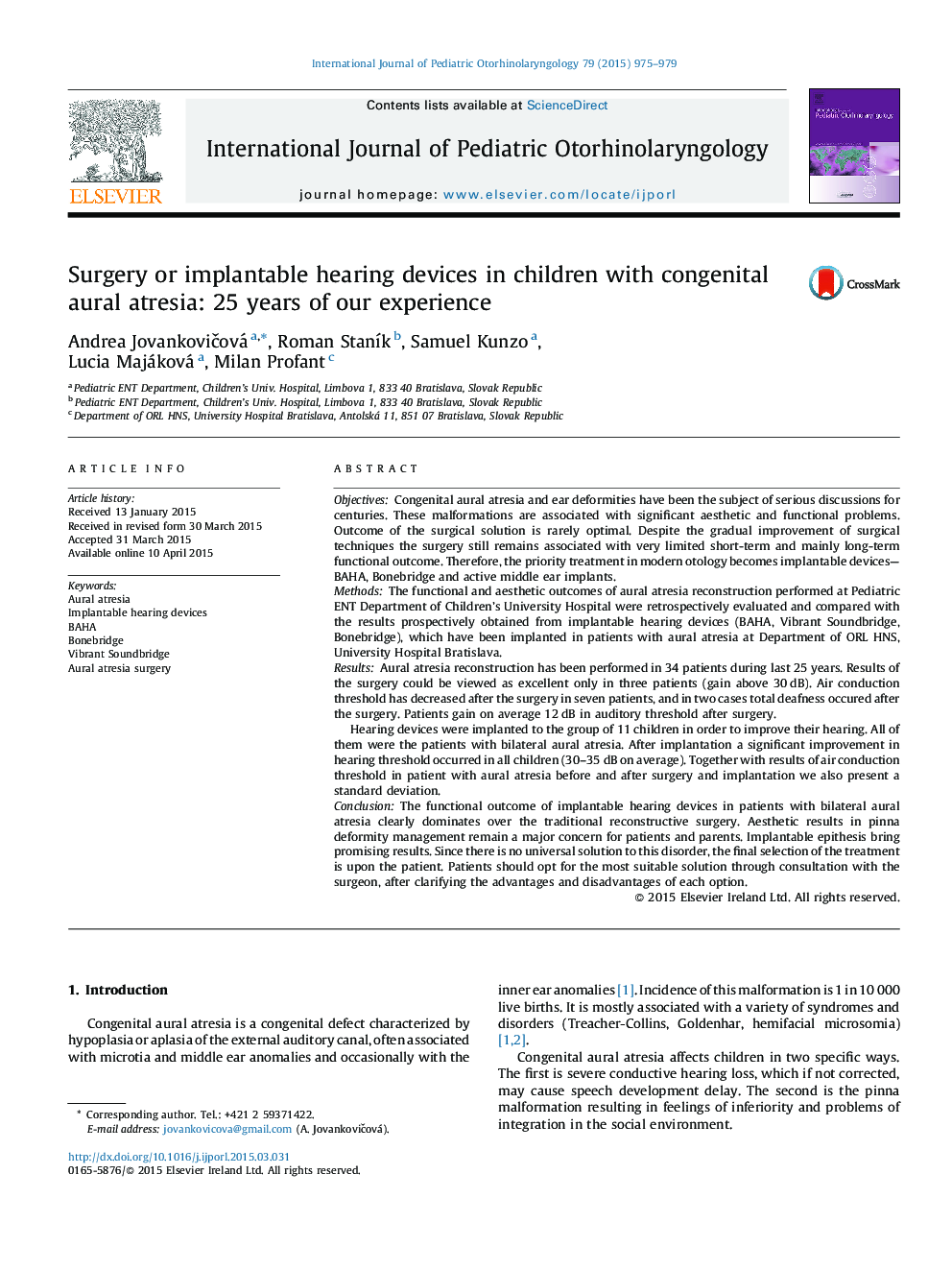| کد مقاله | کد نشریه | سال انتشار | مقاله انگلیسی | نسخه تمام متن |
|---|---|---|---|---|
| 4112169 | 1605994 | 2015 | 5 صفحه PDF | دانلود رایگان |
ObjectivesCongenital aural atresia and ear deformities have been the subject of serious discussions for centuries. These malformations are associated with significant aesthetic and functional problems. Outcome of the surgical solution is rarely optimal. Despite the gradual improvement of surgical techniques the surgery still remains associated with very limited short-term and mainly long-term functional outcome. Therefore, the priority treatment in modern otology becomes implantable devices—BAHA, Bonebridge and active middle ear implants.MethodsThe functional and aesthetic outcomes of aural atresia reconstruction performed at Pediatric ENT Department of Children's University Hospital were retrospectively evaluated and compared with the results prospectively obtained from implantable hearing devices (BAHA, Vibrant Soundbridge, Bonebridge), which have been implanted in patients with aural atresia at Department of ORL HNS, University Hospital Bratislava.ResultsAural atresia reconstruction has been performed in 34 patients during last 25 years. Results of the surgery could be viewed as excellent only in three patients (gain above 30 dB). Air conduction threshold has decreased after the surgery in seven patients, and in two cases total deafness occured after the surgery. Patients gain on average 12 dB in auditory threshold after surgery.Hearing devices were implanted to the group of 11 children in order to improve their hearing. All of them were the patients with bilateral aural atresia. After implantation a significant improvement in hearing threshold occurred in all children (30–35 dB on average). Together with results of air conduction threshold in patient with aural atresia before and after surgery and implantation we also present a standard deviation.ConclusionThe functional outcome of implantable hearing devices in patients with bilateral aural atresia clearly dominates over the traditional reconstructive surgery. Aesthetic results in pinna deformity management remain a major concern for patients and parents. Implantable epithesis bring promising results. Since there is no universal solution to this disorder, the final selection of the treatment is upon the patient. Patients should opt for the most suitable solution through consultation with the surgeon, after clarifying the advantages and disadvantages of each option.
Journal: International Journal of Pediatric Otorhinolaryngology - Volume 79, Issue 7, July 2015, Pages 975–979
